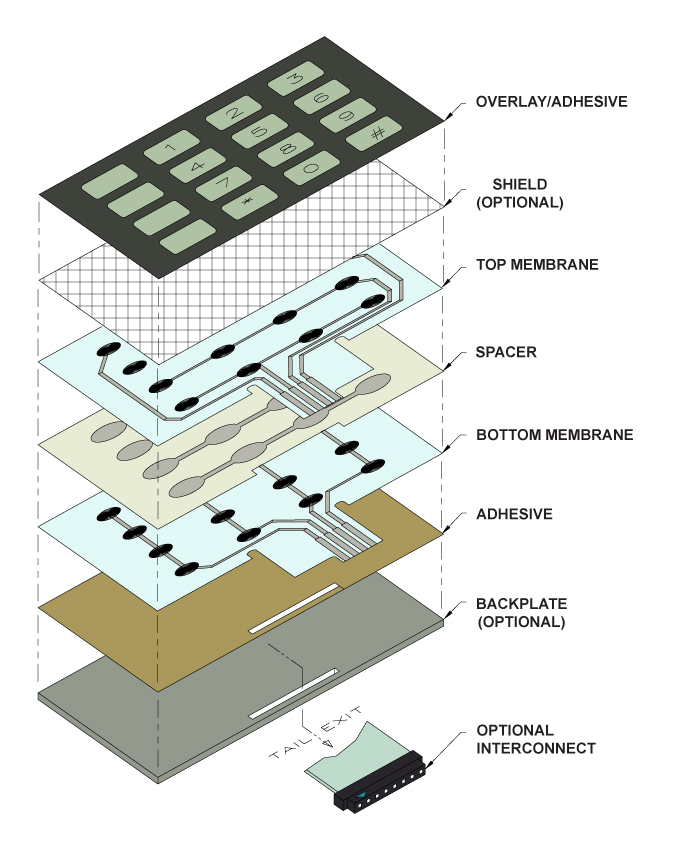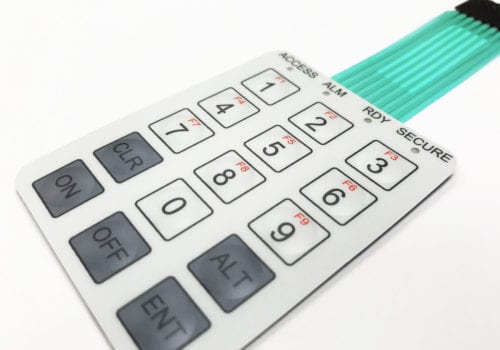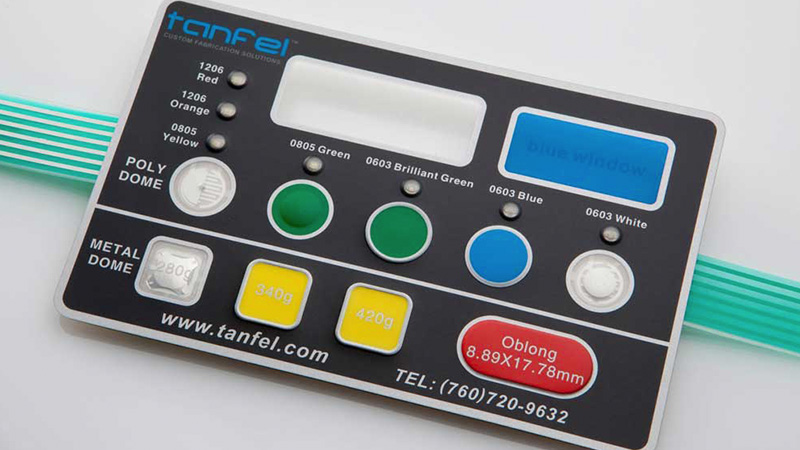Membrane Switch Modern Technology: The Trick to Reputable and Cost-Effective User Interfaces
Membrane layer switch technology has actually arised as a crucial element in the style of individual interfaces, offering both integrity and cost-effectiveness across a varied variety of applications. As we explore the diverse benefits of membrane buttons, their potential for technology raises inquiries about future applications and advancing trends.
Recognizing Membrane Layer Change Modern Technology
Membrane switch modern technology is a commonly utilized interface option in various digital tools, offering a smooth mix of functionality and style. This technology incorporates several layers of products, typically consisting of a visuals overlay, spacer layer, and a circuit layer. The visuals overlay shows the interface aspects, while the spacer layer divides the circuit layer from the overlay until a user triggers a button.
When pressure is related to the overlay, the circuit layer completes the electric circuit, sending out a signal to the tool. This mechanism enables numerous arrangements, consisting of tactile feedback and backlighting options, improving customer communication. Membrane layer buttons are commonly made making use of durable products such as polyester or polycarbonate, making sure long life and resistance to ecological variables like wetness and dirt.
The convenience of membrane layer changes allows their application in diverse sectors, consisting of clinical tools, customer electronic devices, and commercial controls. Their portable style enables combination right into space-constrained environments, offering an effective user interface without endangering visual charm. Comprehending the complexities of membrane switch innovation is important for producers and designers looking for to produce trustworthy and efficient human-machine interfaces.
Key Advantages of Membrane Layer Switches
While various interface solutions exist, membrane switches deal distinctive advantages that make them a preferred selection in countless applications. One of the primary advantages is their durability; membrane layer switches are developed to withstand rough ecological conditions, consisting of dampness, dirt, and temperature level variations, making certain resilient performance. This strength considerably decreases the need for regular substitutes, consequently reducing general maintenance prices.

Moreover, membrane layer switches are light-weight and portable, making them suitable for applications where area is limited. Their low-profile style adds to a smooth look without jeopardizing functionality.
Cost-effectiveness is also a noteworthy advantage, as the production procedure for membrane layer changes has a tendency to be cheaper compared to conventional mechanical switches. This price, incorporated with their integrity and ease of installment, settings membrane layer changes as a sensible option for a vast array of industries weblink looking for effective and efficient interface.
Applications Across Various Industries
How do membrane switches adjust to the diverse requirements of different industries? Membrane layer switch innovation is increasingly identified for its versatility, making it suitable for a vast variety of applications throughout several fields.
In customer electronics, membrane switches provide a small service for remote controls and home appliances, improving user experience through intuitive layout. Additionally, the commercial field leverages membrane buttons for machinery control panels, profiting from their resistance to harsh atmospheres, such as moisture and dust.
Military and aerospace applications additionally utilize membrane layer switches for their dependability and ability to withstand severe conditions, making sure functional efficiency in crucial scenarios. The food and beverage industry adopts these switches for automated systems, where sanitation and convenience of operation are vital (membrane switch). Eventually, membrane layer switches are customized to fulfill the distinct needs of each sector, showing their important function in modern-day innovation interfaces
Layout and Customization Alternatives

In the realm of membrane layer switch technology, design and modification options play a pivotal function in boosting capability and customer interaction. These buttons can be tailored to meet details functional demands and visual choices, making them versatile try this out components in various applications.
One of the primary modification options is the layout of the switch itself, which can be created to suit unique interface and ergonomic considerations. By readjusting the shape, dimension, and arrangement of switches, manufacturers can produce instinctive styles that facilitate ease of use. Additionally, the consolidation of various colors and wikipedia reference graphic overlays enables for branding and improved presence, making certain that individuals can quickly identify functions.
Furthermore, membrane layer switches can be engineered with different responsive feedback devices, such as increased buttons or distinct clicks, to enhance the individual experience. Various materials can likewise be picked for durability and ecological resistance, dealing with factors such as dampness, temperature level fluctuations, and chemical exposure.
Ultimately, the comprehensive design and customization choices readily available in membrane layer button innovation equip organizations to create customized remedies that not only satisfy useful needs however also align with their branding and functional requirements.

Future Patterns in Membrane Layer Switches
As membrane switch modern technology remains to evolve, future patterns are progressively concentrated on enhancing user experience and integrating sophisticated functionalities. One considerable fad is the integration of touch-sensitive and capacitive technologies right into typical membrane switches. This development enables more intuitive interface, supplying tactile responses while keeping a sleek style.
An additional arising fad is using environmentally friendly materials, driven by the growing demand for sustainable manufacturing practices. Makers are seeking to minimize their carbon impact by using recyclable substrates and low-impact inks, straightening with worldwide sustainability goals.
Furthermore, the surge of the Net of Things (IoT) is triggering the incorporation of wise features right into membrane layer switches. Boosted connection options will allow devices to communicate with each various other, permitting smooth integration right into broader systems.
Additionally, innovations in printing modern technologies, such as electronic printing, are enabling higher design flexibility and modification. This allows producers to create complex styles and vivid shades cost-effectively.

Final Thought
Finally, membrane switch modern technology stands for an important advancement in individual interface design, using significant benefits in resilience, personalization, and cost-effectiveness. Its widespread applicability across diverse markets highlights its importance in contemporary innovation. As innovations proceed to emerge, particularly in touch-sensitive interfaces and sustainable products, the potential for membrane changes to boost customer experience and functionality stays encouraging. Proceeded expedition of this modern technology will likely yield even more enhancements and widen its range in future applications.